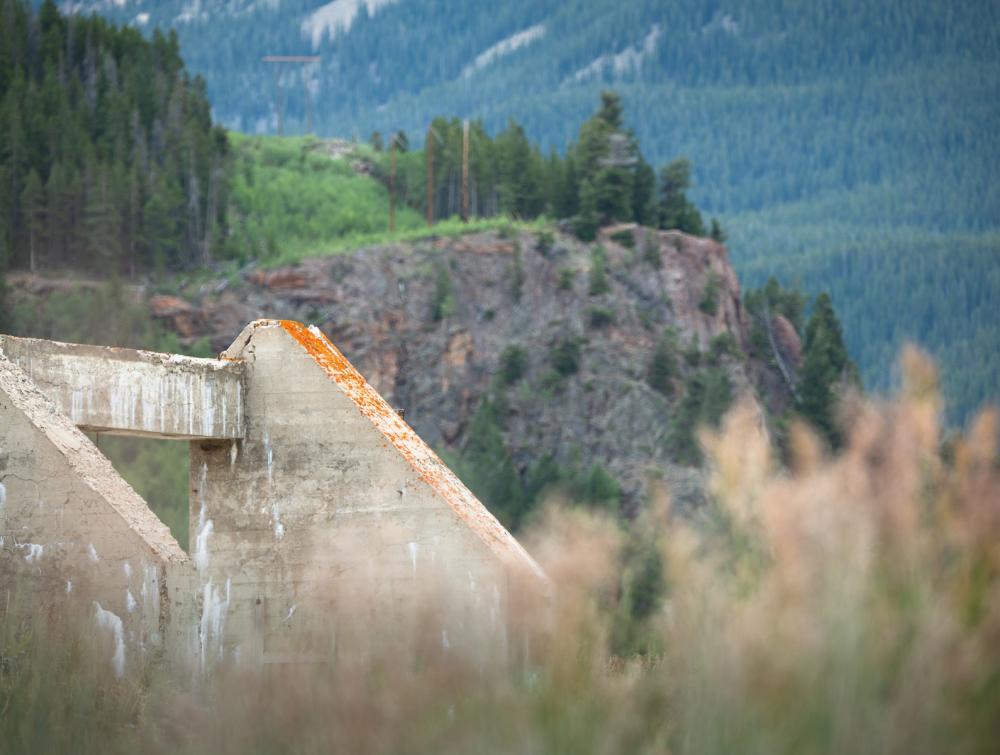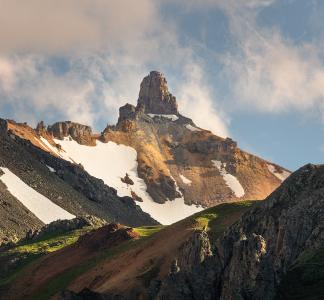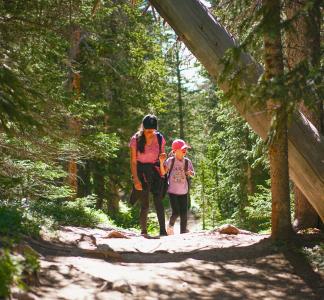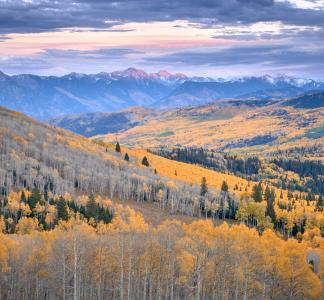Colorado’s Camp Hale recognizes military history in wild setting

Remnants of Camp Hale in White River National Forest, Colorado
Mason Cummings, TWS
WW2-era camp trained thousands, paved way for state’s ski industry
A short drive from several classic Colorado ski destinations in the central Rockies lies a stretch of concrete ruins amid sagebrush. It’s a peaceful place, and close to many outdoor recreation havens (in addition to snowy slopes, there are spots for hiking, camping, fishing and more). But it’s also an important military history site—and maybe even the birthplace of Colorado's outdoor recreation industry.
At Camp Hale, the U.S. Army's 10th Mountain Division once skied, climbed and snowshoed as part of a training regimen that ultimately helped them beat back the Axis in Italy during World War II. Later, some of the same soldiers who sweated and toiled at what they called “Camp Hell” returned to the region to put down the roots of Colorado’s booming ski industry.
Some of the same soldiers who trained at Camp Hale returned from the war to help put down the roots of Colorado’s booming ski industry
Veterans tell tales of that history. Though the 10th Mountain unit is now based at Fort Drum, New York, former 10thMountain Division infantryman Dennis Sedlyar, who served in Iraq, says spending time at Camp Hale is “almost [like] going through your family history book and trying to find out ‘who were your predecessors?’”
Under a proposal called the Colorado Outdoor Recreation & Economy (or CORE) Act, Camp Hale would be designated America's first ever national historic landscape, a special hybrid classification that combines the mission of educating visitors with that of preserving terrain for outdoor recreation on roughly 30,000 acres surrounding the camp.
Though Camp Hale is treasured by Coloradans, veterans have a special appreciation for it.
“I gave the 10th Mountain Division 10 years of my life,” Sedlyar explains. “So to be at this campsite where everything started is just soul food.”
Preparing U.S. soldiers for harsh territory
Sometime around 1940, an avid skier named Charles Minot “Minnie” Dole took an interest in clashes between Finnish and Soviet troops happening half a world away, on the heavily forested Karelian Isthmus. Despite being outnumbered and outgunned, he observed, the Fins were holding their own—largely because they were familiar with the taiga environment and well prepared to maneuver within it. Wearing snow-like camouflage and often traveling on skis or ice skates, they held off the Red Army for weeks, picking off thousands of enemy soldiers before the vastly better-equipped Russians finally overwhelmed them from all sides and forced a surrender.
Dole and several prominent skiers decided the U.S. military needed a fighting force similarly suited to fight on mountainous terrain and in harsh winter conditions. They made their case to U.S. Army Chief of Staff George C. Marshall, and in late 1941, the 1st Battalion of the 87th Mountain Infantry Regiment was activated. To populate the new unit, officials pulled from the ranks of skilled skiers, mountaineers and other outdoor recreation enthusiasts (one veteran has noted that “It was the first time in the history of mankind that you needed letters of recommendation to get into the infantry”).
The 87th initially trained near Mt. Rainier in Washington, but in 1942, a new, larger facility was built in Colorado’s Pando Valley with access to 12,000-foot mountains and lands that included an artillery range and parade grounds. In 1943, the 10th Infantry Division was established as the Army’s light-infantry alpine combat arm, encompassing the 87th and several other units, and assigned to train at the brand-new Camp Hale.
While Dole’s idea of ski-ready troops was originally meant to address fears of a German invasion from the north, the training received by the 10th Mountain Division at Camp Hale ultimately paid dividends in Italy’s North Apennine mountain range, where U.S. forces brought Hitler’s army to its knees.
Following the war, 10th Mountain veterans were instrumental in creating the modern ski industry (and by extension, the outdoor recreation economy that generates billions of dollars each year for the state of Colorado). In addition to creating or managing celebrated resorts at Vail, Breckenridge and Steamboat, they developed new technologies that made skiing more accessible and laid the foundation for a movement to ensure skiing infrastructure didn't harm the local environment.
Veterans prize Camp Hale for both history and recreation
Camp Hale was deactivated in 1965, but it remains a cherished spot for veterans and Coloradans, both because of its historical significance and its natural setting.
To Mike Marinkovich, a 10th Mountain Division veteran, visiting Camp Hale evokes a sense of military esprit de corps.
“To be able to come back where there was so much bonding and camaraderie, and so many people who came together for something bigger than themselves … [it] reminds me of what I’m capable of doing,” he says.
Not all military memories are pleasant, but Camp Hale offers a place to heal for the distressed spirit, too. Bradley Noone, a 10th Mountain Division veteran whose service brought him to Afghanistan, recalls that the landscape furnished a place for quiet reflection after he returned stateside and found he had “a lot of trouble reintegrating back into civilian life.”
“I came to the outdoors. I went hiking. I went camping. I found love in whitewater,” Noone says. “And I’ve come to use Camp Hale to heal my mind, to give me a place to stay fit, to be happy and to live in the moment.”
For Camp Hale to be put to its best modern use, it’s important that we protect not just the footprint of the training complex itself, but the surrounding lands and waters. Noone, who refers to himself as an “avid conservationist,” notes that the soldiers here weren’t confined to the valley itself, but inhabited cabins that dot the surrounding hillsides and walked trails threaded through the broader landscape. He, Marinkovich and Sedlyar all highlight Camp Hale’s natural setting and recreation opportunities as a key part of its appeal.
Lamenting the way growing populations and development can push into backcountry and “take its magic away,” Marinkovich has a simple reason for why the area around Camp Hale should be protected.
“We need to be able to go out and decompress and reflect,” he says. “It’s kind of nice to just hear the sounds of nature and not necessarily the sounds of vehicles going by[.]
CORE Act would give Camp Hale lasting recognition
The CORE Act, introduced by Colorado Sen. Michael Bennet and Rep. Joe Neguse, recently passed the House of Representatives. The bill is seen as truly historic, the largest public lands conservation proposal in the state in a generation. It was crafted by central and southwest Colorado communities that understand the importance of balancing diverse needs like recreation, conservation, ranching and historical preservation, making it a model for truly “homegrown” legislation.
Right now we’re trying to gather support in the Senate to pass the CORE Act, and it’s important we get Colorado Sen. Cory Gardner on board.
If you are a Colorado resident, a veteran, or someone who cares about our military history, please consider sending Sen. Gardner a message asking him to support the CORE Act.



